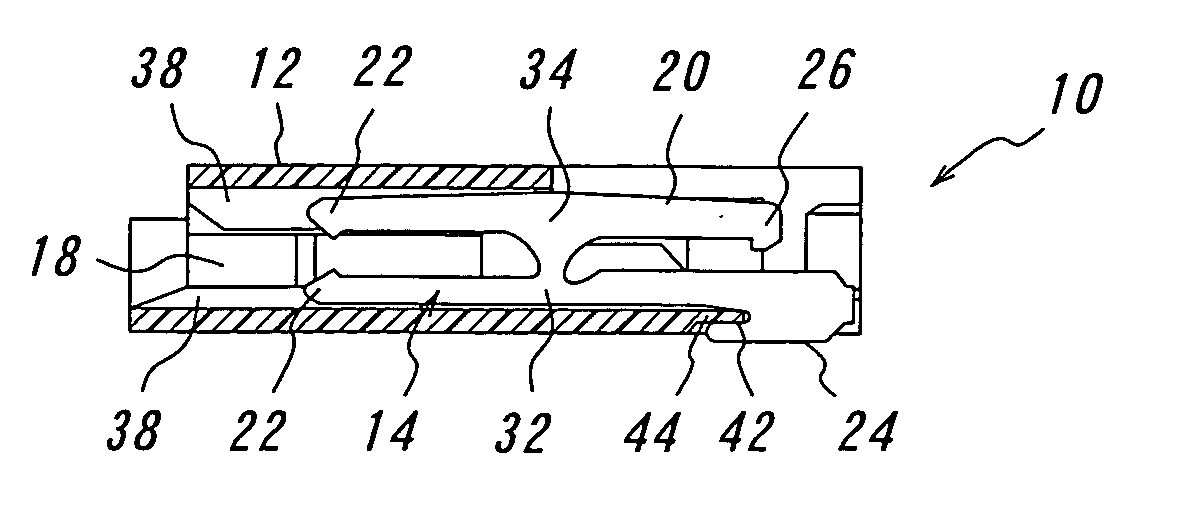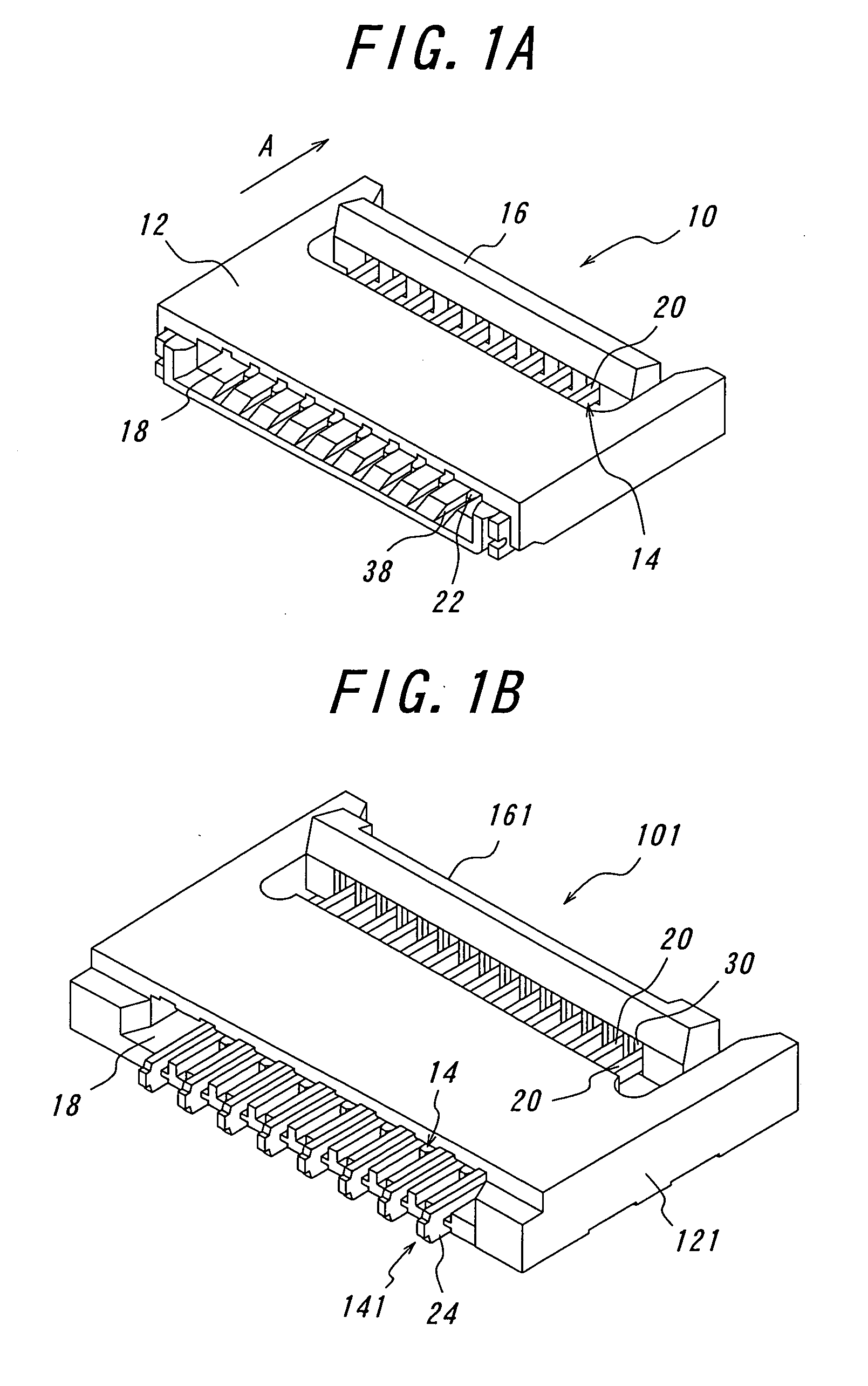Connector
a technology of connecting pins and connectors, applied in the direction of coupling contact members, coupling device connections, coupling/disassembly parts, etc., can solve the problems of unstable contact between contacts and boards, difficult operation, and inability to more reduce the height of connectors, etc., to achieve stable connection
- Summary
- Abstract
- Description
- Claims
- Application Information
AI Technical Summary
Benefits of technology
Problems solved by technology
Method used
Image
Examples
Embodiment Construction
[0028] A connector 10 according to the invention will be explained with reference to the drawings. FIG. 1A is a perspective view of the connector according to the invention viewed from the side of its fitting opening, and FIG. 1B is a perspective view of the connector with contacts arranged in staggered or zigzag fashion, viewed from the fitting opening. FIGS. 2A to 2D are explanatory views for mounting contacts in its housing. FIG. 3A is a partly sectional perspective view of the connector before a flexible printed circuit board is inserted therein and FIG. 3B is a partly sectional perspective view of the connector after the flexible printed circuit board has been inserted and a slider has been pivotally moved. The connector 10 according to the invention mainly comprises the housing 12, the slider 16 and the contacts 14.
[0029] The components of the connector 10 according to the invention will be explained by referring to the drawings. First, the contacts 14 forming one important a...
PUM
 Login to View More
Login to View More Abstract
Description
Claims
Application Information
 Login to View More
Login to View More - R&D
- Intellectual Property
- Life Sciences
- Materials
- Tech Scout
- Unparalleled Data Quality
- Higher Quality Content
- 60% Fewer Hallucinations
Browse by: Latest US Patents, China's latest patents, Technical Efficacy Thesaurus, Application Domain, Technology Topic, Popular Technical Reports.
© 2025 PatSnap. All rights reserved.Legal|Privacy policy|Modern Slavery Act Transparency Statement|Sitemap|About US| Contact US: help@patsnap.com



